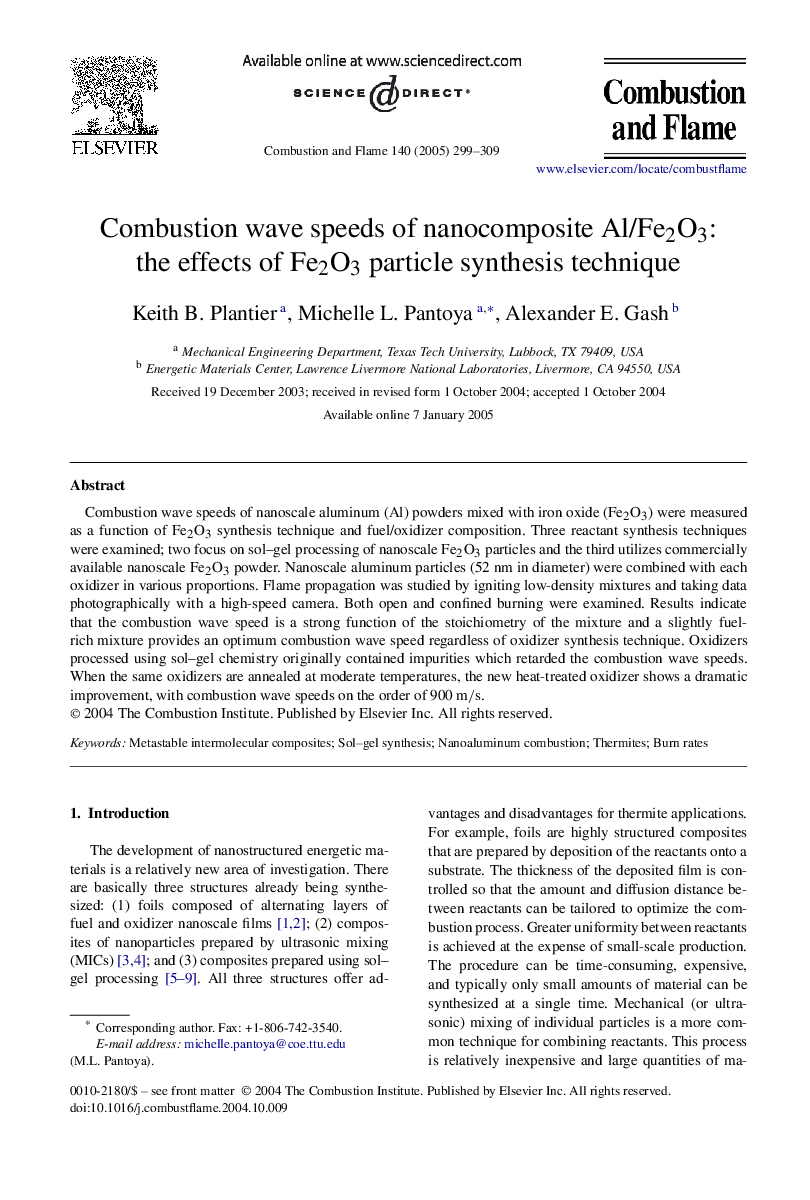| Article ID | Journal | Published Year | Pages | File Type |
|---|---|---|---|---|
| 9624534 | Combustion and Flame | 2005 | 11 Pages |
Abstract
Combustion wave speeds of nanoscale aluminum (Al) powders mixed with iron oxide (Fe2O3) were measured as a function of Fe2O3 synthesis technique and fuel/oxidizer composition. Three reactant synthesis techniques were examined; two focus on sol-gel processing of nanoscale Fe2O3 particles and the third utilizes commercially available nanoscale Fe2O3 powder. Nanoscale aluminum particles (52 nm in diameter) were combined with each oxidizer in various proportions. Flame propagation was studied by igniting low-density mixtures and taking data photographically with a high-speed camera. Both open and confined burning were examined. Results indicate that the combustion wave speed is a strong function of the stoichiometry of the mixture and a slightly fuel-rich mixture provides an optimum combustion wave speed regardless of oxidizer synthesis technique. Oxidizers processed using sol-gel chemistry originally contained impurities which retarded the combustion wave speeds. When the same oxidizers are annealed at moderate temperatures, the new heat-treated oxidizer shows a dramatic improvement, with combustion wave speeds on the order of 900 m/s.
Keywords
Related Topics
Physical Sciences and Engineering
Chemical Engineering
Chemical Engineering (General)
Authors
Keith B. Plantier, Michelle L. Pantoya, Alexander E. Gash,
